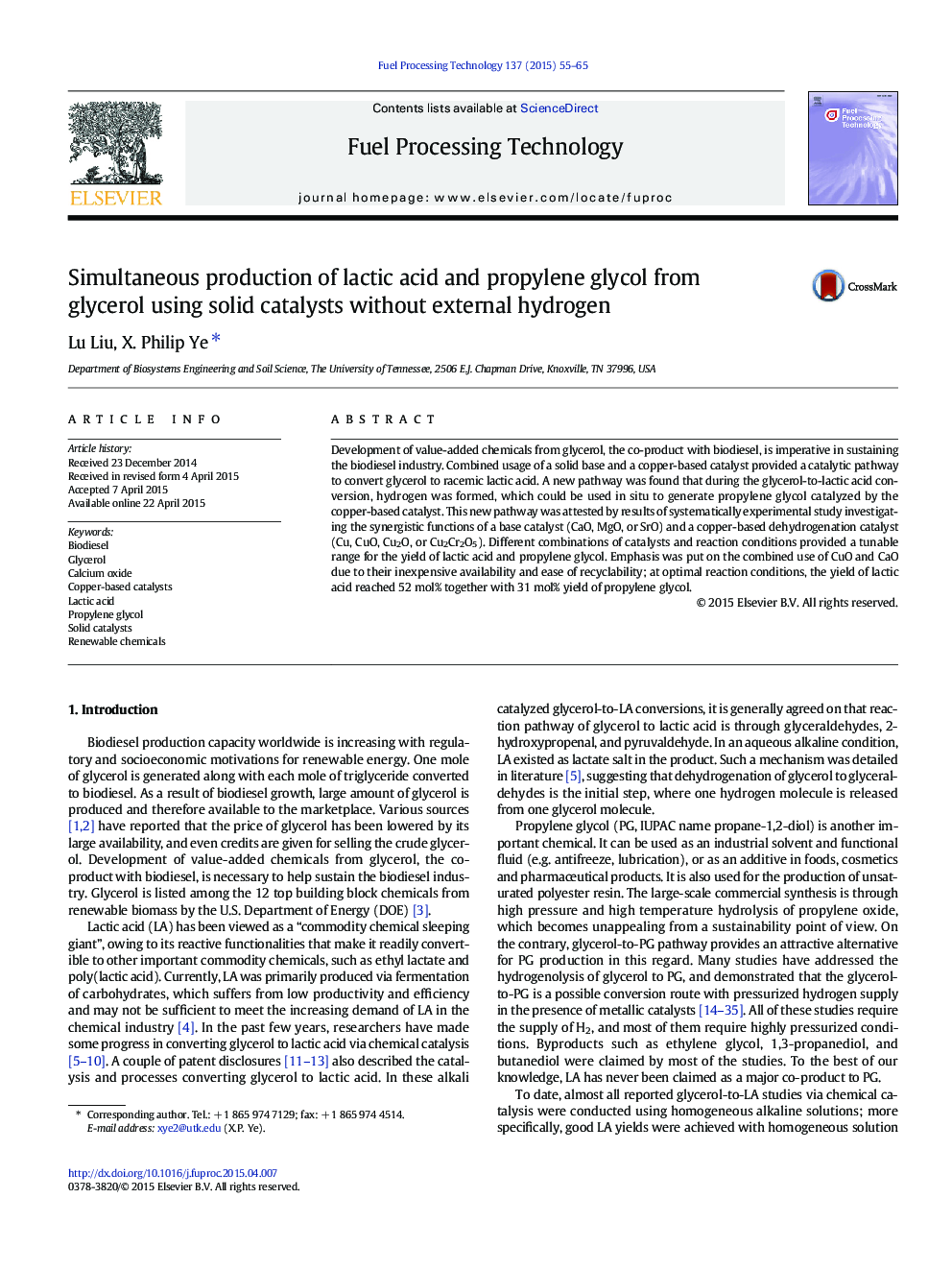| Article ID | Journal | Published Year | Pages | File Type |
|---|---|---|---|---|
| 209461 | Fuel Processing Technology | 2015 | 11 Pages |
•Production of lactic acid and propylene glycol in one-pot without external hydrogen•Synergistic functions of solid catalysts enable mild reaction conditions.•Tunable range for the yield of lactic acid and propylene glycol
Development of value-added chemicals from glycerol, the co-product with biodiesel, is imperative in sustaining the biodiesel industry. Combined usage of a solid base and a copper-based catalyst provided a catalytic pathway to convert glycerol to racemic lactic acid. A new pathway was found that during the glycerol-to-lactic acid conversion, hydrogen was formed, which could be used in situ to generate propylene glycol catalyzed by the copper-based catalyst. This new pathway was attested by results of systematically experimental study investigating the synergistic functions of a base catalyst (CaO, MgO, or SrO) and a copper-based dehydrogenation catalyst (Cu, CuO, Cu2O, or Cu2Cr2O5). Different combinations of catalysts and reaction conditions provided a tunable range for the yield of lactic acid and propylene glycol. Emphasis was put on the combined use of CuO and CaO due to their inexpensive availability and ease of recyclability; at optimal reaction conditions, the yield of lactic acid reached 52 mol% together with 31 mol% yield of propylene glycol.
Graphical abstractFigure optionsDownload full-size imageDownload as PowerPoint slide
